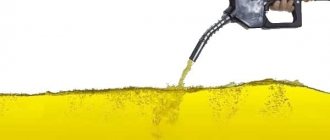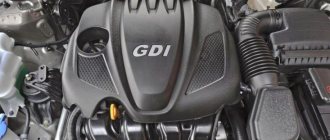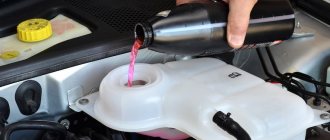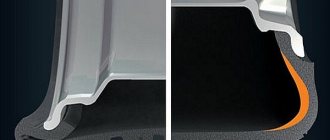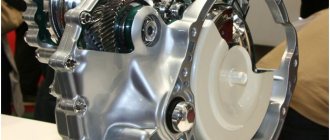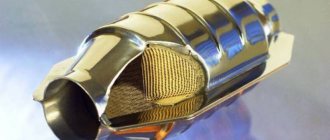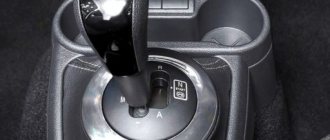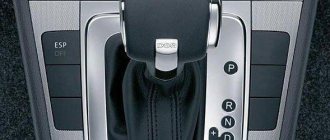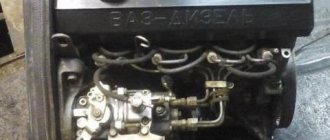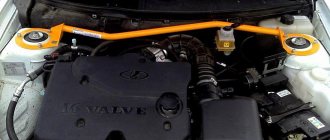What is urea for a diesel engine
The word urea itself means a substance that contains uric acid salts - the end product of mammalian metabolism. It is actively used in agriculture, but is not used in its pure form in the automotive industry.
For diesel engines, a special solution is used, consisting of 40 percent aqueous urea solution and 60 percent distilled water. This substance is a chemical neutralizer that reacts with exhaust gases and converts harmful carbon oxides, hydrocarbons and nitrogen oxides into an inert (harmless) gas. The reaction converts harmful exhaust into carbon dioxide, nitrogen and water. This fluid for use in the exhaust gas cleaning system is also called AdBlue.
Most often, such a system is used in commercial vehicles. The truck will have an auxiliary tank, the filler neck of which is located near the fuel tank filler hole. The truck is filled not only with diesel fuel, but also a urea solution (a ready-made liquid that is sold in cans) must also be poured into a separate tank. Substance consumption depends on the type of fuel system and how efficiently the engine operates.
Typically, a modern car (by the way, a large number of passenger cars that use heavy fuel also receive such a neutralization system) can process from two to six percent of urea from the total amount of fuel consumed. Due to the fact that injection is controlled by high-precision electronics, and the operation of the system itself is leveled by NO sensors, you need to add a reagent to the tank much less often than refuel the car itself. Typically, refueling is required after approximately 8 thousand kilometers (depending on the volume of the tank).
The fluid used to operate the exhaust system cannot be mixed with diesel fuel, since it itself is not flammable. Also, large amounts of water and chemicals will quickly damage the high-pressure fuel pump (its operation is described here) and other important components of the fuel system.
AdBlue refilling in the AS 24 network is a smart choice
AS 24: Europe's leading network of AdBlue suppliers at petrol stations
What is the displacement of a car engine? One of the most important characteristics of any gasoline or diesel engine is its displacement. Since the appearance of the first internal combustion engines, this characteristic of the engine has been the primary indicator, according to
AS 24 simplifies the supply of AdBlue reagent. Thanks to the AS 24 network, you have access to:
- competitive prices from country to country
- more than 600 specially equipped gas stations in 28 European countries
- simple management: single invoice for diesel, AdBlue, TPB and red diesel.
Advantages of refueling in the AS 24 network
- Optimizing the time drivers spend at gas stations by combining diesel and AdBlue refueling.
- Elimination of the complexities of storage in tanks and Eurocubes, as well as relief from associated costs.
- Simplifying the management process and increasing transaction control.
- High quality product at the best prices at gas stations.
- Advantages of AS 24:
Exemplary network in France: almost 100% of gas stations with special equipment, i.e. one gas station every 50 km3 AS gas stations 24 out of 4 with special equipment in Europe
AdBlue consumption
AdBlue consumption is almost proportional to the mileage. Other factors such as driving style, ambient temperature or route type also affect fuel consumption.
On average, AdBlue consumption in relation to diesel for trucks is from 4 to 5%.
- For transportation within the region: about 500 l/year
- For transportation within the country: about 1000 l/year
- For international transport: about 2000 l/year
Recommendations for use
- AdBlue is not classified as a hazardous substance: in case of contact with clothing or skin, it is recommended to rinse with water.
- AdBlue may be corrosive to some metals: if it comes into contact with the surface, wash with water.
- Do not use equipment (tanks, canisters) used for other liquids for filling with AdBlue reagent.
At AS 24 filling stations it is usually not possible to fill AdBlue into a diesel tank because the filling nozzle is equipped with a safety device that prevents it from being activated if it is inserted into a vehicle's AdBlue tank.
Conversely, it is not possible to fill diesel into an AdBlue tank because the diameter of the filler neck of the AdBlue tank is much smaller than the diameter of the diesel nozzle.
Risks associated with mixing AdBlue and diesel
AdBlue should never be mixed with water or other substances, particularly diesel. This poses a risk as it can seriously damage the SCR system, resulting in costly repairs.
Why is it needed in a diesel engine?
Modern cars use catalysts to neutralize fuel combustion products. Their honeycombs are made of metal or ceramic material. The most common modifications inside are coated with three types of metals: rhodium, palladium and platinum. Each of these metals reacts with exhaust gases and neutralizes hydrocarbons and carbon monoxide under high temperature conditions.
The output is a mixture of carbon dioxide, nitrogen and water. However, diesel exhaust also contains large amounts of soot and nitrogen oxide. Moreover, if you modernize the exhaust system to remove one harmful substance, this has a side effect - the content of another component increases proportionally. This process is observed in different operating modes of the power unit.
To remove soot from the exhaust, a trap or particulate filter is used. The flow passes through the small cells of the part and soot settles on their ribs. Over time, this mesh becomes clogged, and the engine activates plaque combustion, thereby extending the filter's service life.
Despite the presence of additional elements in the exhaust system of a car, all harmful substances are not completely neutralized. Because of this, the harmfulness of the car engine does not decrease. To improve the environmental friendliness of transport, another additional system for purifying or neutralizing diesel exhaust gases was developed.
SCR neutralization is created precisely for the purpose of combating nitric oxide. It is installed by default in all cars with a diesel engine that meet the Euro4 standard and higher. In addition to a clean exhaust, thanks to the use of urea, the exhaust system suffers less from the formation of soot.
Main characteristics
Urea for engines is harmless to the human body. This is a colorless solution of urea in demineralized water. Urea is used as a consumable working fluid in modern diesel vehicles equipped with an SRC aftertreatment system, as a reagent that reduces the harmfulness of exhaust gases.
Compound
The system is quite complex and consists of a number of components:
- a tank in which a supply of urea is stored, replenished when refueling a car, the neck is brought outward using measures that maximally exclude the pouring of diesel fuel into it;
- AdBlue injection system control unit;
- a pump that creates solution pressure on the injection valve into the exhaust pipe in front of the SCR catalyst;
- nitrogen oxide content sensors before and after the catalyst;
- return line for draining excess from the dispenser with a valve;
- temperature sensors in the tank and injection lines;
- exhaust gas temperature sensor;
- urea level sensor in the tank;
- filters for the solution supplied to the dispenser;
- sensors and valves for adjusting the temperature of the circulating fluid;
- SCR catalyst.
The composition includes two control circuits - according to the amount of injected solution and its temperature. System components can be heated by liquid from the engine cooling system, which is monitored by the corresponding sensors and control unit. Wide changes in the temperature of urea, especially its freezing, should not be allowed.
The amount of solution supplied is determined by the control unit, which receives information about the engine operating mode, in particular about the temperature of the exhaust gases.
The required amount is measured by the metering valves at a fixed pump pressure, the rest circulates through the return line, simultaneously heating the tank. It is also possible to use electric heating of lines.
The catalytic converter is a honeycomb structure with noble metals deposited on ceramics, on the surface of which catalytic reactions occur.
The catalyst material itself is not consumed. When exhaust gases with active substances are blown through it, the output components are acceptable according to Euro-5 and Euro-6 standards.
In addition to process control, the unit also continuously monitors the technical condition of the system. If a malfunction is detected, the corresponding indicator on the dashboard lights up, indicating that the system is turned off.
The consequences can be different, from a significant limitation of engine output to the complete impossibility of starting it.
What happens if you don't fill your car with AdBlue?
Without AdBlue, most modern diesel cars will refuse to start or will run in low power mode (called limp mode). Therefore, when using such an engine, it is necessary to monitor the AdBlue level and replenish it if necessary.
The car itself will notify you about the need to replenish urea via the on-board computer.
Due to the rather strict attitude of automakers towards the environmental friendliness of exhaust from cars running on diesel engines (on some models, to the point that the engine stops starting), the first warnings will appear several thousand kilometers before the required refueling. This way, you will have enough time to refill the product before the car runs out of it completely. But in our realities, for truckers, we would advise you to carry a couple of canisters of urea solution with you.
How does urea work in an engine?
Emissions from a diesel power unit contain 2 main harmful components: soot and nitrogen oxide. To combat soot, which is a dangerous carcinogen, a particulate filter was invented to delay the penetration of soot into the atmosphere. As for nitrogen oxide, the problem of emissions of this substance into the atmosphere was solved using the SCR (Selective Catalytic Reduction) liquid system. The SCR system was developed by FPT Industrial, part of the Fiat holding. Now the invention of the Italian company is used by all European manufacturers of diesel cars.
The operation of the SRC system is based on a simple chemical reaction. The spent exhaust gases in the combustion chamber interact with an aqueous solution of urea coming from the neutralizer tank through injection by an injector.
Under the influence of high temperature, urea decomposes into isocyanic acid and ammonia. The chemical reaction of nitric oxide and ammonia produces water vapor and harmless nitrogen. The remaining chemical compounds simply burn in the combustion chamber. As a result, the harmfulness of diesel vehicle exhaust is sharply reduced, since the dangerous compound nitrogen oxide is neutralized.
Initially, the liquid neutralization system was used in power units of trucks, but gradually found its application in passenger diesel cars. The use of SRC, an anti-particulate filter and a catalyst makes it possible to achieve environmentally friendly emissions at the Euro-5 and Euro-6 levels.
Pros and cons of the system
Reducing the harmful emissions of diesel engines into the atmosphere is not the only advantage of the SRC system. Also, using SRC has the following advantages:
- engine power increases significantly;
- there is a slight decrease in the level of fuel consumed;
- low fluid consumption - a passenger car will travel 5-10 thousand km on one canister.
However, the use of urea also has its disadvantages, which largely make its use in diesel vehicles impractical. These include:
- increasing complexity of the system, which leads to more frequent breakdowns;
- additional maintenance costs (an AdBlue canister will cost from 500 rubles);
- freezing at temperatures below -11 °C.
It is the inability to use AdBlue at standard temperatures for domestic winter that makes it impractical in Russian conditions, even though the urea tank is equipped with special heating to prevent the liquid from freezing.
At the same time, diesel cars purchased in Europe are equipped with this system by default; they are now freely sold on the Russian market. It is also necessary to equip your “iron horse” with such a system when traveling to Europe - otherwise you may face a rather large environmental fine. Therefore, a considerable number of domestic owners of diesel cars still have to maintain the SRC system, if their car is equipped with one, and buy urea.
Advantages and disadvantages
To objectively evaluate the use of urea or urea in automobiles, the strengths and weaknesses of such a solution should be studied after the action and functional features of SCR. There are a number of advantages in the use of urea. But this same urea causes some problems and difficulties. Especially when it comes to using the system in cars that are operated in Russia.
Let's start with the positive qualities.
- Safety and harmlessness. Urea is an organic substance, the periodic injection of which into the exhaust system does not pose any harm or threat to the environment. And therefore it is considered safe for humans.
- Automatic injection. The system allows you to automatically supply the required amount of urea at the required time. The supply is carried out depending on the engine operating mode, the current load on the diesel internal combustion engine and the intensity of exhaust formation.
- Environmental friendliness of the engine. Motors with such a urea exhaust cleaning system meet the most stringent requirements for environmental standards. This benefits not only consumers, but also the automakers themselves. The sales market for such cars is significantly expanding in countries that have increased requirements for environmental safety and the level of environmental pollution from cars.
- No impact on power. Reducing exhaust toxicity does not lead to a parallel drop in power at all. The engine remains the same high-torque and productive. In some places, urea only improves its performance and extends its service life.
- Transformation process. The purification process allows the output to be such safe substances as nitrogen, water and carbon dioxide. Nitrogen oxides become an inert gas that poses no threat.
- Reducing the number of fines and taxes. This applies to developed countries, where you have to pay high taxes to operate less environmentally friendly cars. Additionally, no one will fine you for emitting dangerous and harmful exhaust if you have SCR.
- Small expense. For normal operation of a passenger car equipped with a urea-based exhaust cleaning system, a large amount of reagent is not required. Typically, consumption does not exceed 150 ml per 100 kilometers. That is, a tank with 10 liters of substance is enough to cover about 10 thousand kilometers. The consumption of trucks is higher than expected.
- Relative affordability. Most often, urea can be found in canisters with a capacity of 20 liters. This volume of reagent costs about 10 euros. There are also cheaper products. This directly depends on the manufacturer itself.
But for Russia this technology is not yet fully seen as a positive change. Many people are thinking about how to bypass the operation of this system, based on the injection and consumption of urea.
Several arguments are given that reveal the negative aspects of using urea in the exhaust system.
- Sensitivity to the quality of diesel fuel. Each of the domestic motorists who has experience in operating diesel cars admits that there is a problem with the quality of diesel fuel in the country. This results in a rather significant disadvantage of using urea, which is extremely sensitive to the quality of the fuel poured into the tank. It is recommended to use low sulfur diesel fuel to ensure proper operation of the converter.
- The need to refill with liquid, which is not so easy to find in domestic conditions. Urea, that is, Adblue liquid, is not available everywhere. Therefore, sometimes problems arise with finding this solution, which is poured into a special tank with a separate filling hole, like the fuel tank.
- Quality. Not all urea that is offered on the domestic market meets established and generally accepted quality requirements. Because of this, the efficiency of the entire system decreases and the exhaust is not properly cleaned. At the same time, a larger amount of solution is consumed.
- Temperature stability. Another weak point is urea, which begins to crystallize when the temperature drops to below -11 degrees Celsius. Therefore, in the conditions of the Russian climate in certain regions of the state, it becomes almost impossible to use urea.
- Unpleasant smell. The smell of exhaust that comes out from under the car after injecting urea can hardly be called pleasant. But this has to be sacrificed in order to ensure the proper level of environmental friendliness to reduce exhaust toxicity. If someone is very bothered by the smell, then using the technology will become a problem for them.
- Release of ammonia vapors. They occur in cases where the urea tank is exposed to high temperature. Partial evaporation occurs, and the released vapors can cause irritation to the eyes, skin and mucous membranes.
- Toxicity. Although Adblue itself is considered safe, contact with skin is strongly discouraged. Contact may cause chemical burns.
- A large number of fakes. Considering all the objective advantages of the new technology, many scammers are trying to make money from it by selling extremely dubious counterfeit urea under the guise of a quality product. Because of it, the entire cleaning system and the engine itself suffer greatly. As a result, you may encounter serious damage.
- Additional financial costs. This question is of more concern to owners of trucks that use a modern cleaning system using urea.
What are they made from?
Urea for diesel is a special liquid consisting of two components: urea itself (urea) and demineralized water. The concentration of pure urea in the finished product is 32.5%, the remaining 67.5% is pure water without any minerals.
On the European market, the product received the euphonious name AdBlue and is manufactured under the supervision of the VDA (Association of the German Automotive Industry). Only VDA-certified manufacturers are authorized to use the AdBlue® trademark in the manufacture and sale of their products.
Urea composition for diesel
Despite the apparent simplicity of diesel engine fluid, it is impossible to prepare urea yourself using organic fertilizer. The formula of the urea molecule (NH2) is 2CO, physically it is an odorless white crystal, soluble in water and polar solvents (liquid ammonia, methanol, chloroform, etc.).
For the European market, the liquid is produced under the supervision of the VDA (German Association of the Automotive Industry), which issues licenses to manufacturing companies, some of which supply the liquid for the domestic market.
In Russia, counterfeiting under the AdBlue brand is more than 50%. So, when buying urea for a Russian-made diesel engine, you must be guided by the “Compliance with ISO 22241-2-2009” marking.
How to choose
When choosing urea for a diesel unit, several factors must be taken into account.
- It is almost impossible to make a solution yourself. Urea itself (urea) is sold separately and is used as a nitrogen fertilizer and in other applications. However, it is very difficult to obtain demineralized water at home, as well as to achieve the required ratio. Therefore, you should not take risks and try to make AdBlue liquid yourself, otherwise you can cause serious damage to your car engine.
- Up to 50% of the product sold on the domestic market is counterfeit and unsuitable for use in diesel car engines.
Therefore, when choosing AdBlue for diesel power units, you should pay special attention to the name of the manufacturer and whether it has a certificate of quality conformity.
- When purchasing urea, you must purchase specifically AdBlue liquid from licensed manufacturers. That is, the product must bear the AdBlue® trademark and comply with the European standard ISO 22241-1. Only such a product will not harm the engine, which cannot be said about uncertified products sold under the names “urea for diesel engines,” etc.
- You can purchase urea sold under the brand names of automakers, including using it to fill a car of a different brand. In fact, such products are absolutely identical and differ only in their name - the automakers themselves do not produce the product, giving the manufacturing plants the right to use their trademark. AdBlue VW is quite suitable for use in Mercedes engines, etc.
- There is no difference between urea for cars and trucks - these products are completely identical.
- There is also no difference in the characteristics of Russian and imported AdBlue. However, when purchasing a domestic product, you need to make sure that it meets the quality standard GOST R ISO 22241.
In Russian conditions, many owners of cars equipped with SRC catalysts are forced to disable the cleaning system or use its emulator. The main reason for such actions by domestic owners of diesel cars is the inability to effectively use the system in winter - at temperatures below -11 ° C the liquid simply freezes. Therefore, the feasibility of using SRC catalysts and AdBlue liquid in Russian conditions at the moment remains a big question.
What is the consumption of this AdBlue reagent?
AdBlue consumption varies depending on the specific exhaust after treatment system. But this is also influenced by the driving style itself, as well as the conditions in which the car is moving. For example, if a vehicle is carrying some kind of cargo or is in a traffic jam, then AdBlue consumption will become higher (more) than when driving on the highway in a light vehicle. In the latter case, the use (consumption) of AdBlue will also, of course, occur, but not as quickly as in difficult operating conditions of the car.
In essence, we can summarize the following, no matter how you operate the car, and if it is not designed to break down harmful emissions from a diesel engine, but it has a similar system, then you will always have additional expenses for the purchase of this product.
Diesel engine and ecology
As technology developed, increasingly stringent standards and requirements regarding the harmfulness of exhaust gases began to be put forward for internal combustion engines. The installation of catalytic converters on gasoline internal combustion engines made it possible to solve this problem quite effectively. Moreover, the engineers managed to complete the task without significant design changes to the engine itself and its fuel equipment.
The catalyst is installed in the exhaust system. The body of such a catalytic converter has double walls, between which there is a special heat-resistant shell. There are also special “honeycombs” inside the catalyst, which can be made of ceramic or metal. These honeycombs are coated with a small layer of a substance that reacts chemically with exhaust gases. In other words, the active substance on the honeycomb is a catalyst that converts harmful compounds in the exhaust by oxidizing them into carbon dioxide, nitrogen and water.
Today, catalysts are widely used that are based on three components: platinum, palladium and rhodium. Platinum and palladium neutralize carbon monoxide and hydrocarbons, while rhodium effectively interacts with nitrogen oxides. The advantages of such catalytic converters include efficiency, ease of manufacture, and long service life.
It is well known that soot is a harmful carcinogen that can trigger the formation of cancer cells. It is worth noting that attempts to reduce the amount of soot in diesel exhaust gases lead to a significant increase in nitrogen oxide content, and reducing nitrogen oxide emissions means a sharp increase in the amount of soot. In other words, a decrease in the content of one toxic component leads to a natural increase in another. This feature affects various operating modes of a diesel engine.
To combat soot, diesel cars are equipped with particulate filters. Such filters operate on the principle of a special catcher. Soot particles settle on the filter mesh. When the mesh becomes clogged, the engine control system activates the soot afterburning process, thus regenerating the particulate filter and normalizing its throughput.
Urea fertilizer, nutrition and active growth of plants
The drug is yellow, gray or white granules. It is also sold in tablet form. Due to the fact that the drug shell takes a long time to melt, unnecessary overdose of soil and plants is eliminated. Today, urea is used not only during planting, but also during the period of active growth and fruiting. How can you tell if a plant has a nitrogen deficiency? There are several signs:
- The plant grows very slowly, although according to time indicators, it should already reach a certain height.
- Weak, sluggish and thin shoots. Normal, healthy plants with sufficient nitrogen have strong and fleshy shoots.
- Yellow, small leaves. Lack of nitrogen can cause early leaf fall.
- A small amount of harvest. If a tree has not fruited well for more than one year, this is a clear sign that it lacks nitrogen fertilizers. The buds are weak and underdeveloped, which is why the harvest is poor.
If you notice similar signs in your summer cottage, using urea is the solution to all problems. This fertilizer is also considered universal, and for good reason. It can be used as a top dressing for any crops that have a long growing season. But how to properly use urea on your site?
Using urea to clean exhaust
Tightening environmental regulations and standards has pushed automakers to create even more advanced systems, which are now actively used on diesel internal combustion engines. Such solutions made it possible to reduce the amount of nitrogen oxide.
One of the most common cleaning schemes is Bluetec technology. This system uses a whole range of exhaust cleaning elements:
- particulate filter;
- oxidation catalyst;
- liquid system for neutralizing nitrogen oxide;
This solution was developed and is actively used by the German auto giant Mercedes-Benz on various models of commercial and passenger diesel cars. Trucks equipped with Bluetec have a separate tank into which an active reagent called AdBlue is poured. The specified reagent is a solution of urea with water (water and ammonia). A special dosing device automatically injects a urea solution into the exhaust system of a diesel car, where the exhaust gases and urea solution for diesel are mixed.
After mixing the urea with the exhaust, the specified mixture enters the SCR (selective catalytic reduction) converter. This neutralizer is distinguished by the fact that it works on a selective principle. Ammonia, which is found in diesel urea, reacts with nitrogen oxides under the influence of the catalytic layer in the converter and high temperatures of up to 300 degrees Celsius. The result is the decomposition of nitrogen oxides into nitrogen and water. Other toxic compounds also burn out in the neutralizer. A similar scheme is used on passenger cars with the specified cleaning system.
What is urea used for?
Since European countries are actively fighting against environmentally hazardous cars, new requirements and rules for automobile production are being introduced.
The consequence of such measures was the emergence of a technology called SCR and AdBlue urea. However, not everyone understands what Adblue is in cars and why it is necessary.
Initially, they tried to solve the problem by making changes to the diesel fuel supply and gas distribution system. Engineers tried to do everything possible to reduce the amount of harmful compounds in exhaust gases. But if this satisfied less stringent requirements, then later the situation changed significantly. Using similar methods it was no longer possible to bring the exhaust to safe standards.
It was then that the method of so-called selective catalytic neutralization appeared. For this purpose, special equipment is installed in cars. It is necessary for injecting urea into vehicle exhaust systems, which can significantly reduce the toxicity of exhaust gas by neutralizing it.
Now you should understand in more detail why urea or urea is needed in a diesel car. It is commonly called Adblue. This is a special reagent that is used on diesel cars manufactured in accordance with Euro 4, 5 and higher standards. Urea is an integral part of the SCR purification system.
In fact, it is an aqueous solution of urea, which performs key tasks in the matter of catalytic neutralization of exhaust. Thus, the machine emits environmentally friendly gas. At the same time, urea can extend the life of the engine and increase its operating efficiency.
Almost all new trucks, as well as some passenger cars, are equipped with an SCR system. This converter allows you to increase engine performance and provide better protection against carbon deposits. In this case, the urea is located in a separate tank, which is located near the engine.
A modern exhaust cleaning system for diesel power plants consists of:
- particulate filter;
- oxidation catalyst;
- liquid nitrogen oxide neutralization system.
It is important to understand that urea is not an independent means of increasing the environmental friendliness of exhaust and reducing toxicity, but is part of the overall SCR system. Cars on which such a system is installed are equipped with separate tanks for refilling with urea
This reagent received the common name Adblue, which emphasizes environmental friendliness and the desire to protect the environment.
Cars on which such a system is installed are equipped with separate tanks for refilling with urea. This reagent received the common name Adblue, which emphasizes environmental friendliness and the desire to protect the environment.
In fact, the solution is presented in the form of ammonia and water in certain proportions. But in our country the substance is often called urea. A special dispenser automatically takes liquid from the tank, injects the solution into the exhaust system of a diesel vehicle, and helps reduce toxicity. Injection is carried out at the site where the exhaust gas and urea solution are mixed.
When the components are mixed together, the resulting mixture passes through an SCR neutralizer. It stands for Selective Catalytic Reduction or simply selective catalyst (neutralizer).
This technology is different in that it works based on the selective principle. Ammonia, which is a component of Adblue, begins to react with nitrogen oxide, being under the influence of a layer of catalytic substance in the converter itself and high temperature. Temperatures can be up to 300 degrees Celsius.
As a result, nitrogen oxides decompose into their component parts. Namely, water and nitrogen, which are substances that are completely harmless to the environment and human health. Additionally, in the system (in the neutralizer), the process of burning out the remaining toxic components occurs. The technology is relevant for trucks and passenger vehicles.
Technical urea AdBlue
The end product of mammalian metabolism, urea, has been known since the 19th century. Carbonic acid diomede is synthesized from inorganic compounds and is widely used in agriculture. In the automotive industry, a solution of Adblue technical fluid is used as an active reagent in the purification of toxic exhaust gases from nitrogen oxides.
Adblue consists of 40% urea and 60% distilled water. The composition is injected into the SCR system into the pipe through which the exhaust gases pass. A decomposition reaction occurs in which nitric oxide breaks down into harmless nitrogen and water molecules.
Technical urea for diesel - Adblue has nothing in common with urea urea, which is used in the agricultural sector and in pharmacology.
Urea as a fertilizer - high efficiency at minimal cost
Often the producer of the urea solution using the “direct method” is called the “Primary Producer” of AdBlue.
And “blending” (secondary method) involves the purchase by an AdBlue manufacturer of urea in granules at the same Nitrogen Plant and its subsequent mixing with demineralized water in its production.
The “direct method” is considered more advanced, since it eliminates the granulation process itself and the subsequent movement of raw materials to the manufacturer, which ensures the highest quality AdBlue and largely eliminates possible undesirable impurities in the finished urea solution for diesel.
In any case, all “primary” and “secondary” AdBlue manufacturers are official license holders of the AdBlue trademark, strictly adhere to the standards and requirements in this area and produce a quality guaranteed product that complies with the ISO 22241-1 standard.
Along with licensed, that is, legal AdBlue manufacturers, there are others on the Russian market who do not have the right to call their product AdBlue. In order to instill buyer confidence in their “urea” and make a connection with the quality of licensed AdBlue, these manufacturers often call their products with similar names, where the word “BLUE” appears such as this-Blue, that-Blue, best-Blue, etc. Sometimes they even call their urea for diesel a “complete analogue of AdBlue,” which misleads the consumer and is a violation of copyright in the AdBlue trademark.
The quality of “imitation” products is not guaranteed by any quality control systems.
All car manufacturers recommend using “diesel urea” under the brand name AdBlue. This will ensure the quality of the AdBlue fluid used in the SCR system and the durability of the vehicle's catalyst components.
Today in Russia there are 4 legal licensed AdBlue manufacturers.
The only manufacturer of AdBlue using the “direct method” in Russia is the EUROCHEM company.
Use only licensed AdBlue fluid in your car!
AdBlue catalog ISO 22241-1
Edblue in a diesel engine
A liquid emission control system, or SCR, is a closed system through which soot-free diesel exhaust flows. Adblue liquid is poured into a self-contained reservoir and injected into the exhaust pipe in a measured dose before entering the converter.
The mixed gas enters the SCR neutralization unit, where a chemical reaction occurs to decompose nitrogen oxide due to ammonia in urea. In combination with nitric oxide, ammonia molecules break it down into components that are harmless to humans and the environment.
After a full cleaning cycle, a minimum amount of pollutants is released into the atmosphere; the emission parameter complies with Euro-5 and Euro-6 protocols.
Operating principle of the diesel exhaust cleaning system
A complete diesel exhaust aftertreatment system consists of a catalytic converter, particulate filter and SCR system. The principle of cleaning in stages:
- Exhaust gases enter the catalytic converter and particulate filter. Soot is filtered, fuel particles are burned off, and carbon monoxide and hydrocarbons are removed.
- The injector is used to inject a certain amount of AdBlue into the connection between the diesel particulate filter and the SCR converter. Urea molecules break down into ammonia and isocyanic acid.
- Ammonia combines with nitrogen oxide, the most harmful component of used diesel fuel. The molecules are broken down, resulting in the formation of water and nitrogen. Harmless exhaust gases are released into the atmosphere.
Cleaning process
Since we have already managed to understand what urea is and what advantages the use of this mixture in cars provides, we need to understand in more detail the process of neutralizing exhaust toxicity.
The proven high efficiency of urea or Adblue is based on 2 working cycles.
- First, urea is added to the stream of exhaust gas that leaves the combustion chamber of the engine by injection. Under the influence of high temperature, a chemical reaction begins. This allows the urea to be converted into a substance called ammonia.
- In the second stage, dangerous compounds in the form of nitrogen oxide, which are contained in the exhaust itself, begin to turn into water and nitrogen. This becomes possible due to the interaction between ammonia and the catalyst. The oxidation process allows us to obtain two completely safe substances.
A visual description of the process allows you to understand why this very urea is needed, what functions it performs and how this all happens in a diesel engine.
Urea is used to improve the level of environmental friendliness. By doing this, manufacturers bring their cars to the required level of safety provided for by Euro 4 and higher standards, including the current Euro 6 standard.
It is important to note the fact that urea is consumed in fairly small quantities. Therefore, there is no need to spend a lot of money on constant refilling with urea.
Purpose of the SCR system
The abbreviation SCR means selective catalytic work to decompose nitrogen oxides after they have formed, as opposed to measures to prevent their occurrence, that is, without an undesirable decrease in temperature.
In this way, it is possible to very radically destroy toxic compounds of nitrogen and oxygen, using a fairly simple substance - urea, as well as a special catalytic converter with the appropriate controls and controls.
New diesel engines: why do they need urea?
This piece started out as a review of the Peugeot 508 and has grown into a large all-encompassing article. After all, the crux of the matter is new diesel engines that operate with the addition of urea to a special SCR exhaust gas catalyst. How do these engines work and what is an SCR catalyst?
Eco-cocktail: diesel + urea
It all started in 1988 with the adoption of the first Euro series toxicity standards (to be fair, we note that by that time some regulations and rules were already in force in the USA and Europe to regulate the level of exhaust gases).
Euro emission standards have been constantly revised and have become more and more “green” in terms of the amount of pollutants in the exhaust, and more and more complex and expensive for car manufacturers to comply with.
The latest and most stringent toxicity standards were “Euro 5” and “Euro 6”, which were adopted simultaneously by September 2009, but “Euro 6” began to take effect only in September 2014 with an implementation period of 1 year, i.e. . until September 2015.
The main change of Euro 5 and Euro 6, in addition to the reduction of other harmful substances in exhaust gases, was the control of nitrogen oxide NOx.
This video is dated 2013 – already then there were technologies for cleaning exhaust gases using an SCR catalyst. Which, by the way, appeared even earlier in the world of trucks: there “urea diesel engines” made their debut among some manufacturers even during the introduction of Euro 5 toxicity standards.
It is believed that nitrogen oxides NOx can damage the lining of the human respiratory tract, cause cancer, and are to blame for smog and acid rain. In short, nitrogen oxides have become a “new target”. Taking into account the fact that diesel engines gained particular popularity in Europe in the 2000s, the problem risked becoming widespread.
Then they decided to convert nitrogen oxides into harmless nitrogen (N2) and water (H20). But how to do that? Using the chemical urea CH4N2O and a series of reactions. So, initially, when water is added, the chemical urea itself decomposes:
CH4N2O + H20 → 2NH3+CO2
In fact, we get ammonia NH3 and carbon dioxide CO2. The latter simply evaporates into the exhaust pipe, but the first - ammonia - enters into further chemical reactions. Already with nitrogen oxides:
- 4NO + 4NH3 + O2 → 4N2 + 6H2O
- 2NO2 + 4NH3 + O2 → 3N2 + 6H2O
- NO + NO2 + 2NH3 → 2N2 + 3H2
However, to make such a reaction a reality, you need a place for it - this is an additional SCR catalyst, which is installed in the exhaust system of the car. In addition, you need to get chemical urea somewhere, you need to take it with you.
This means that a urea tank is required, which is usually installed in the rear of the car: near the gas tank or in the bottom of the luggage compartment.
Plus minor improvements: various sensors, a different engine control program, warning lights on the instrument panel, etc.
Advantages of urea for car enthusiasts
By the way, “another engine control program” is not a small thing at all. After all, if previously it was necessary to tune the engine taking into account the level of nitrogen oxide emissions, now an SCR catalyst will help here.
This means that designers can focus their efforts on achieving an optimal balance of fuel efficiency and more power.
For example, BlueHDi engines have become 7-10% more powerful compared to comparable predecessors of the HDi series.
The BlueHDi 120 engine is a 1.6-liter 4-cylinder turbodiesel with a maximum power of 120 hp. and torque 300 Nm; the predecessor e-HDi 110-115 had 110-115 hp. and up to 270 Nm. The BlueHDi 180 engine is a 2-liter 4-cylinder turbodiesel with 180 hp. and 400 Nm; the predecessor HDi 160 has 163 hp. and 340 Nm. Increase in power and torque – about 7-10%
Interestingly, installing only an SCR catalyst was not enough. Thus, the 1.6-liter turbodiesel (DV6 family) has been produced since 2004 and was first introduced with a 16-valve cylinder head (for the most powerful versions).
However, in 2011, the engine changed significantly: the compression ratio was reduced (from 17.5 to 16), instead of a 16-valve cylinder head, an 8-valve “head” is now installed on all versions of the engine.
It’s the same with the 2-liter diesel engine (DW10 family): it has been produced for many years and, during modifications, received a new cylinder-piston group and cylinder head, turbine, intake and exhaust systems, and timing.
So, firstly, we have a 7-10% increase in power over comparable diesels without urea. Secondly, we get a reduction in fuel consumption.
For example, according to the passport, the Peugeot 508 with the previous 163-horsepower engine consumed 7.6 liters of fuel per 100 km in the city; on the highway - 4.6 l; in the combined cycle - 5.7 liters.
With the updated and more powerful BlueHDi engine, fuel consumption did not increase, but decreased: in the city - 5.2 liters; on the highway - 3.8 l; mixed - 4.3 l (all according to the passport).
Of course, the numbers look fantastic, I personally couldn’t get them in a real test, perhaps such a consumption can only be shown in ideal “greenhouse” conditions. However, in reality the cars turned out to be very economical: in the city the Peugeot 508 consumed about 6-7 l/100 km, on the highway it was about 4 l/100 km. There is the following observation about the Citroen C4...
Almost ideal conditions: Boryspil highway, cruise control at 90 km/h, almost no wind, temperature about +15 degrees. The result is 3.3 l/100 km. This is important because a couple of years ago I drove a Citroen C4 e-HDi with 6 speed.
Manual transmission even in similar conditions could not squeeze out of it a result better than 3.6-3.7 l/100 km. Savings of 0.3-0.4 l/100 km - about 10% - I confirm from personal experience. In total, I drove 500-700 km in each car in different conditions.
Peugeot's result is written above, Citroen's result: highway - 3.3-3.5 l/100 km; city - about 5 l/100 km.
As a result, we can say that urea allows you to make a diesel engine more powerful by 7-10% while simultaneously saving similar fuel (about 10%).
Disadvantages of urea and price issue
And now about the disadvantages and the notorious “issue price”. Now it’s difficult to calculate what the difference is between a regular HDi diesel engine and a BlueHDi diesel engine, because... The BlueHDi engine in Ukraine is usually paired with an automatic transmission in medium or expensive car trim levels; its comparison with the “HDi + manual transmission” version is incorrect. However, you can estimate the cost of specific spare parts for these engines.
The French use an SCR catalyst in a single block with a DPF filter, rightly believing that it is better to process and clean hot exhaust gases in one place.
By the way, in 1999-2000, the PSA Group was one of the first among car manufacturers to introduce a DPF filter (their): just in line with Euro 3 standards to combat soot.
This is another illustration of the fact that PSA is one of the leaders in the diesel car market - in Europe and in Ukraine. And now two technologies - DPF and SCR - have been combined in one unit.
At the same time, if this unit is damaged, you will have to pay a considerable price, because... both components - the SCR catalyst and the DPF filter - are expensive in themselves. For example, for a Peugeot 508, an SCR catalyst in a block with a DPF filter is priced at 38 thousand hryvnia (about $1.5 thousand); the second large part of the system - a tank for urea - will cost 30 thousand hryvnia ($1.2 thousand).
The parts are expensive, but if you don’t get into serious accidents and don’t hit the bottom with bumps on a broken road or dirt road, then the car owner is unlikely to know their value: even during the introduction of Euro 5, the service life of exhaust system parts was calculated for a mileage of at least 160 thousand km
Part of the high cost of such exhaust gas purification systems was the reason for the VW scandal, which we wrote about earlier.
But there are also ongoing costs, first of all, the cost of maintenance for a “urea diesel” engine. For example, consider the Citroen C4, because... For this model, both a regular HDi diesel engine and a new BlueHDi engine are offered today.
The difference in maintenance for the two engines is not only the need to fill with chemical urea, but also the requirement to replace the fuel filter every 20 thousand km for the BlueHDi engine versus replacing the fuel filter every 40 thousand km for the HDi engine.
As a result, each maintenance, where you have to add AdBlue fluid and additionally change the fuel filter, costs approximately twice as much as usual - 4.8 thousand UAH versus 2.25 thousand UAH. If we consider the maintenance at 40 thousand.
where the fuel filter needs to be replaced in two engines, we can roughly calculate the cost of chemical urea alone: 4.8 thousand UAH versus 3.45 thousand UAH; the difference is approximately 1.3 thousand UAH - this is the cost of the poured urea.
Although you can find chemical urea cheaper from third-party sellers. For example, we look at the offers on Hotline: on average the price is 30-35 UAH per 1 liter, usually you need to buy 20 liters. By the way, why 20 liters? Because the urea tank is designed so that the liquid supply is enough for 15-20 thousand kilometers.
With an average fluid consumption of about 1 liter per 1000 km, an appropriate tank is needed - for example, a tank with a volume of 17 liters was installed in the test cars. Chemical urea consumption is only indirectly related to engine size; it depends more on fuel consumption - and the amount of exhaust gases that need to be converted.
But in general, the rule is unchanged: 1 liter per 1000 km, the tank is about 15-20 liters for the clearance “from MOT to MOT”.
Urea filling points are either in the filling hatch cover or in the trunk of the car, in hidden cavities.
Does the last decision seem strange? But there is absolutely no way to mix up the filling necks, and you will have to go there about once a year.
Controlling the liquid level is simple: just one press of a button is enough - and we get the necessary information on the BC display. If it is necessary to fill with chemical urea, a message will appear automatically
What happens if the urea runs out? First, warning lamps or warning signs will light up on the instrument panel, even before the end of the urea, with a mileage reserve of about 2-2.5 thousand km.
Then there will be another warning, this time at border runs, when there is very little urea left.
But if the owner ignores these warnings, then the engine either goes into emergency mode (power, speed is cut, dirty exhaust), or the engine cannot be started at all!
In a word, there are a lot of disadvantages, they are considerable, and they also cost a pretty penny.
Diesel with urea: Peugeot, Citroen, who's next?
When we talk about diesel engines of the PSA Group, we are talking about the general situation and trends in the market as a whole. After all, these engines are well known on the market, they have good recommendations, and therefore have been or are found under the hoods of cars of many other brands: Ford, Volvo, FIAT, Mazda, Mini.
Another “diesel giant” is the VW Group, which rarely outsources its engines, but the list of its own brands is more than sufficient: VW, Audi SKODA, SEAT. Finally, we will definitely remember diesel Mercedes. And all these brands have “urea diesel engines” already presented in Ukraine or will appear very soon!
Mercedes was the first to offer “urea diesel engines” in Ukraine: BlueTEC series engines were or are found on the E-class, GL and GLE SUVs (formerly ML). The operating rules are similar: refueling “from MOT to MOT” for 15-20 thousand km, approximately 20 liters of urea, “issue price” (refilling urea) is about 1.3 thousand.
UAH No particular problems have been noticed so far, but the cars are now only a couple of years old. But if Mercedes is a “premium” car, where they don’t consider maintenance costs too much and can go to a company service for many years, then the case with PSA is the first arrival of “urea diesels” in the mass class.
Throughout this year, sales of “urea diesel engines” may start in Ukraine for a number of VW, SKODA, SEAT Leon models; PSA representatives have already announced the price list for the Peugeot 308 with the BlueHDi diesel engine.
And Ford just recently announced a new diesel engine 2.
0 EcoBlue, which was originally designed to meet Euro 6 standards and the use of urea: first for commercial cars, vans, minivans, then for passenger cars.
Whether we like it or not, “urea diesels” are coming to the middle classes of modern foreign cars.
And, perhaps, an alternative to them can only be offered by modern small-volume gasoline turbo engines, which offer high power and a noticeably reduced appetite for fuel.
The best examples are the TSI engines from VW and PureTech Turbo from PSA - two automotive groups that until recently made a huge bet on diesel engines. Such is the “cyclical joke” of the history of engine building.


